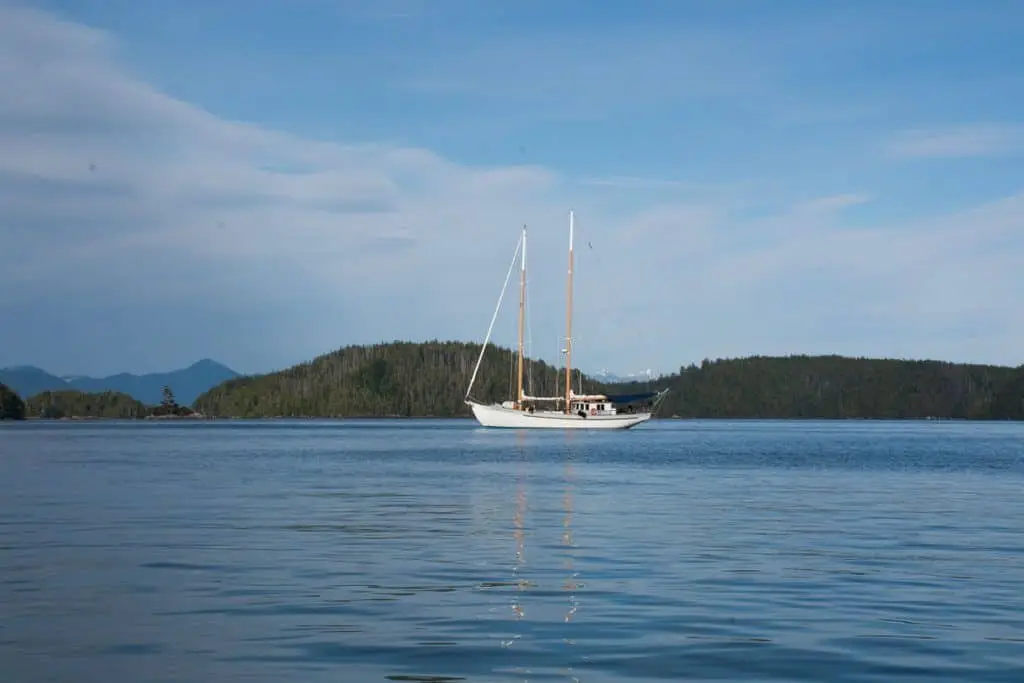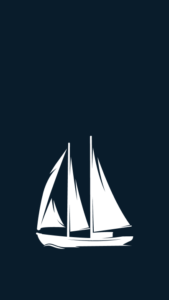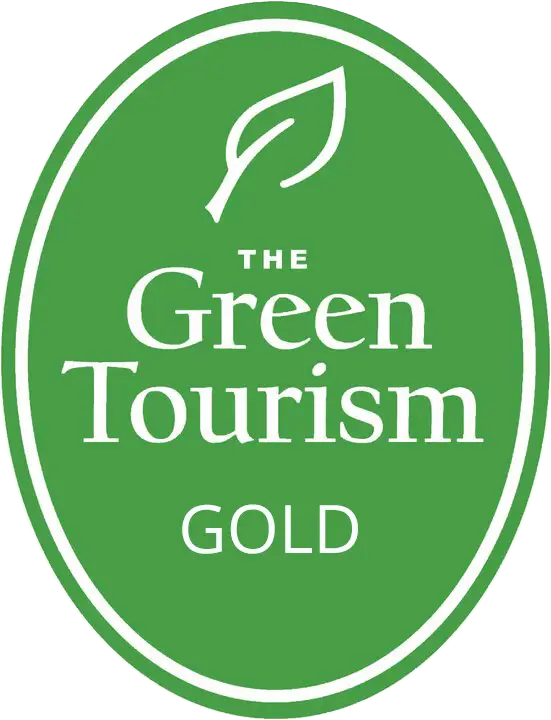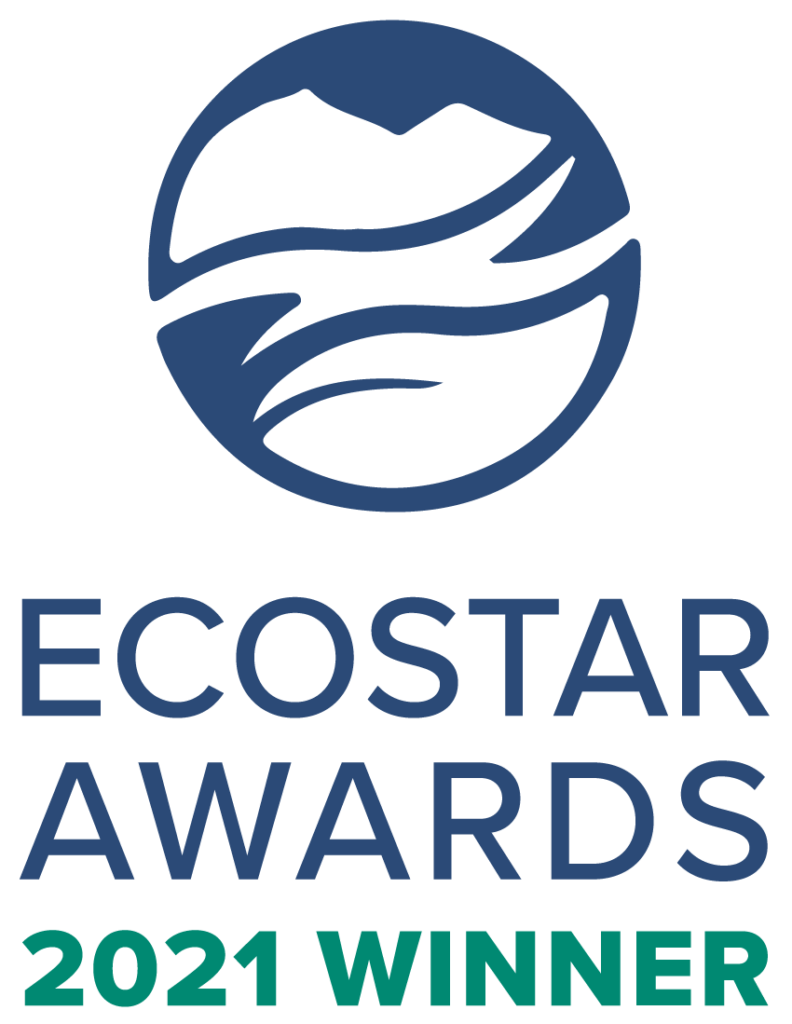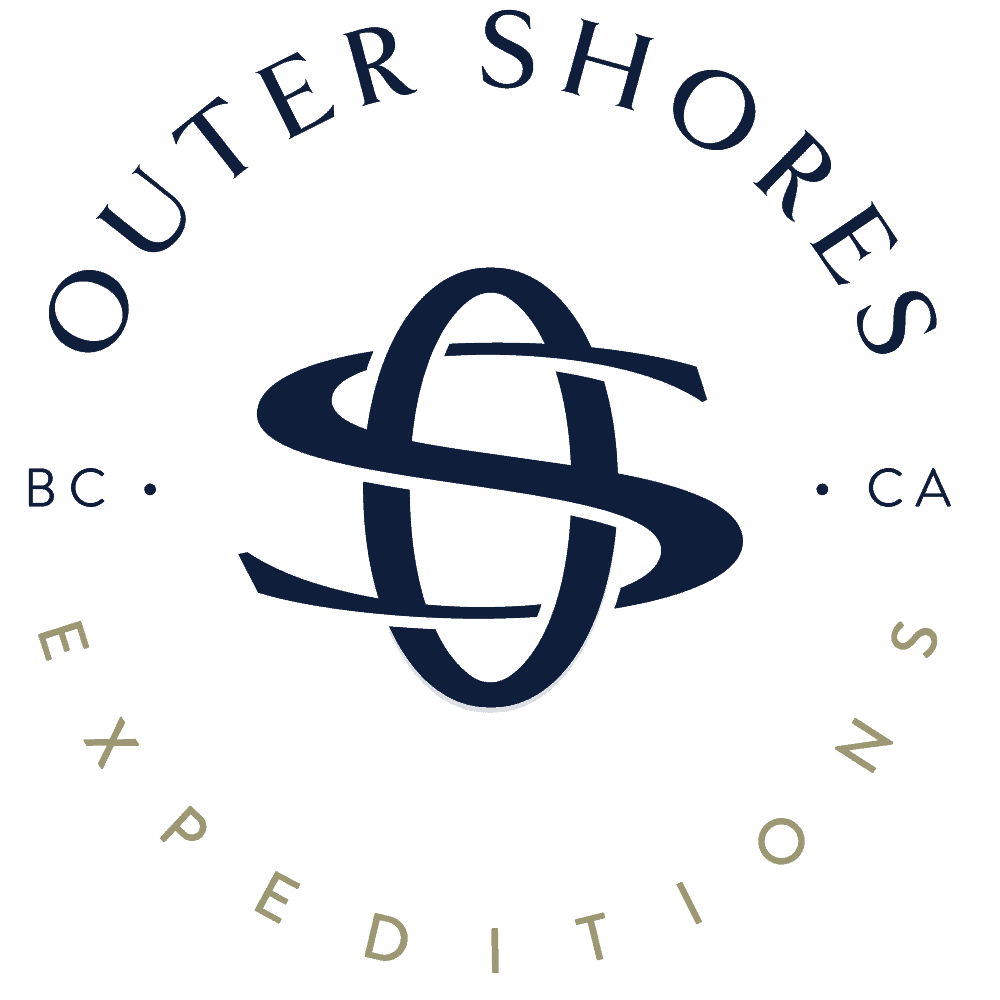The Passing Cloud and our 2017 season are officially underway in Pacific Rim National Park!
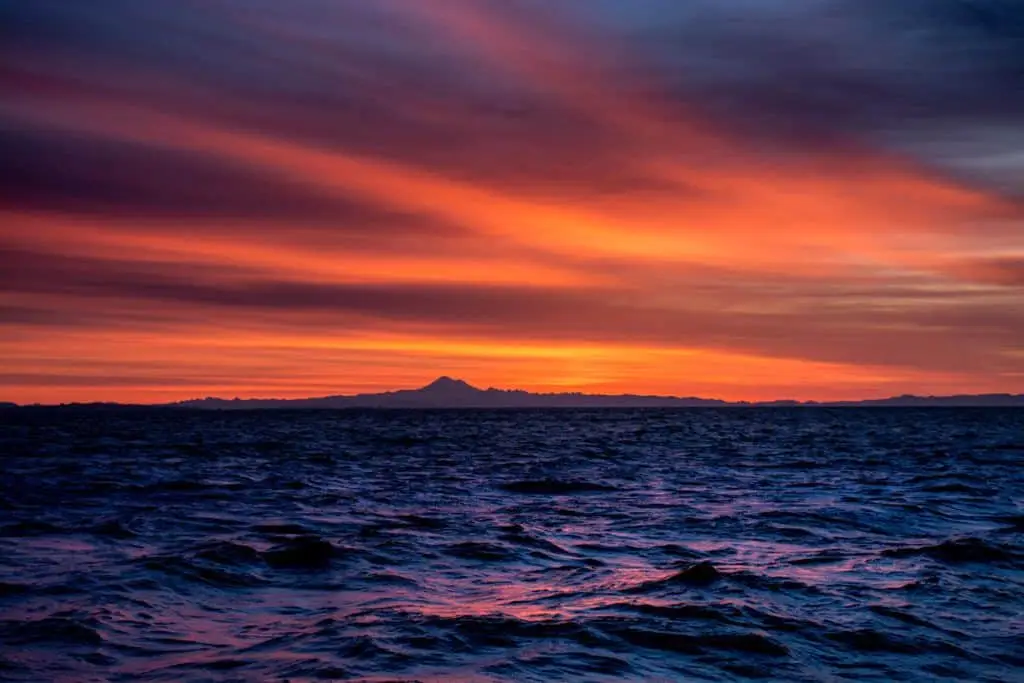
Our crew arose before sunrise on Sunday, April 16th, with a light easterly breeze and an ebbing tide, the perfect combination to carry us northwest from Victoria to Pacific Rim National Park Reserve. We were guided along by a breathtaking sunrise over Mount Baker, lighting crimson waters to lap our hull.
With sunny skies and a following sea, we transited parallel to the famed West Coast Trail with its white sandy beaches and cascading waterfalls emerging from the rainforest. A mere 12 hours later we set anchor in Barkley Sound, nestling into a safe-haven amongst the 300 islands and islets of the Broken Group, in the traditional territory of the Nuu-chah-nulth First Nations.
We motored out in our zodiac to a cluster of islets exposed to the open Pacific, where Steller sea lions and cormorants soaked up the last of the day’s sun as the waves pulsated around the rocks.
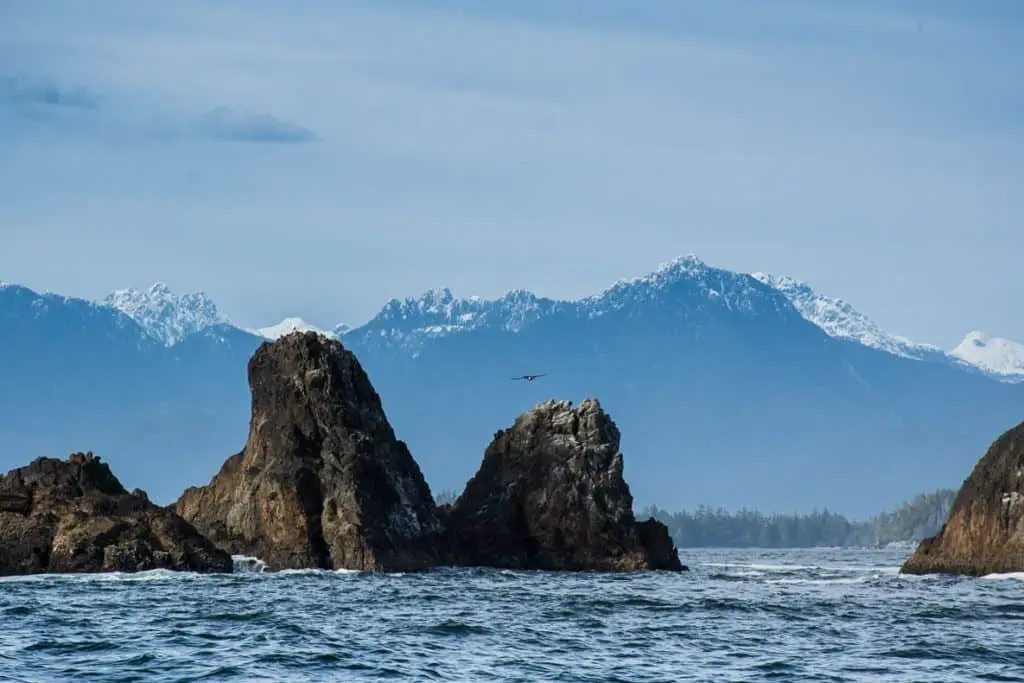
We went ashore to explore Maktl7ii Island (Pronounced Mauk-Lye), an ancient village site of approximately 500 people. We meandered through a dense forest understory laden with ferns and evergreen huckleberry bushes, beneath massive cedar trees draped in moss and witch’s broom, like something out of Narnia. We emerge on the other side, to a shoreline framed by jutting pinnacles of rock and surge channels, speckled with tide pools filled with mussels, anemones, and other intertidal creatures.

The Great Tide Pool, Russ informs us, is where the Maktl7ii people built stone fish traps to await the falling tide. Untold numbers of fish would be trapped in the locks and dinner would be served. Remnants of stone walls, hundreds, possibly thousands, of years old can still be seen today. This Olympic-sized tide pool is so protected by the surf on the outer side of the bluffs, we have no doubt this is where the fisherman would have brought in their bounty from a full day of whaling and fishing at sea.
We climbed a bluff and perched atop staring out to the open ocean. Apart from a few scattered islets cropping out of the sea, there was nothing but a vast expansive ocean between Japan and us. It’s amazing to think that only a few centuries ago this was a bustling metropolis, and one of the most densely populated regions in Western North America. Based on the number of village sites and village sizes within the Broken Group Islands, estimates of the Nuu-chah-nulth population before European colonization was upwards of 8,000 people. In the 19th century, more than 90 percent of the population was decimated by disease following European contact.
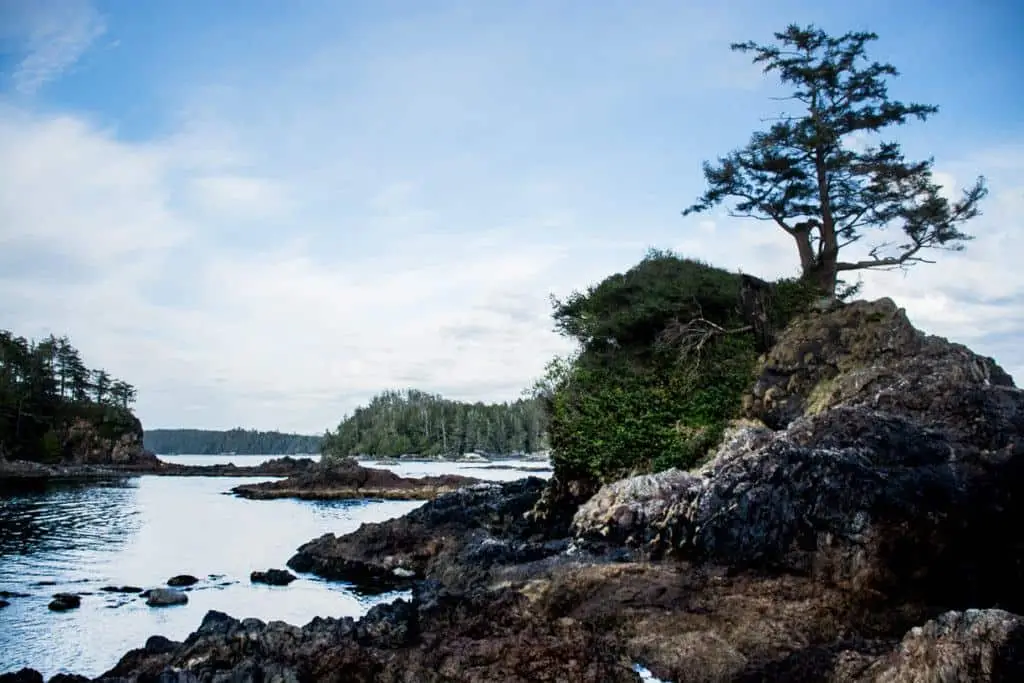
As we explore the shoreline, I’m taken back to this time before contact and can picture myself living there. Running along the rocks barefoot awaiting the catch of the day as I forage for berries and edible plants in the forest. I imagine a time of community and a time of sustainability and resourcefulness, a simpler time – or was it? Remnants of the cultural history remain in oral stories passed down from the elders and the archaeological evidence in the ancient fish traps and deep shell middens.
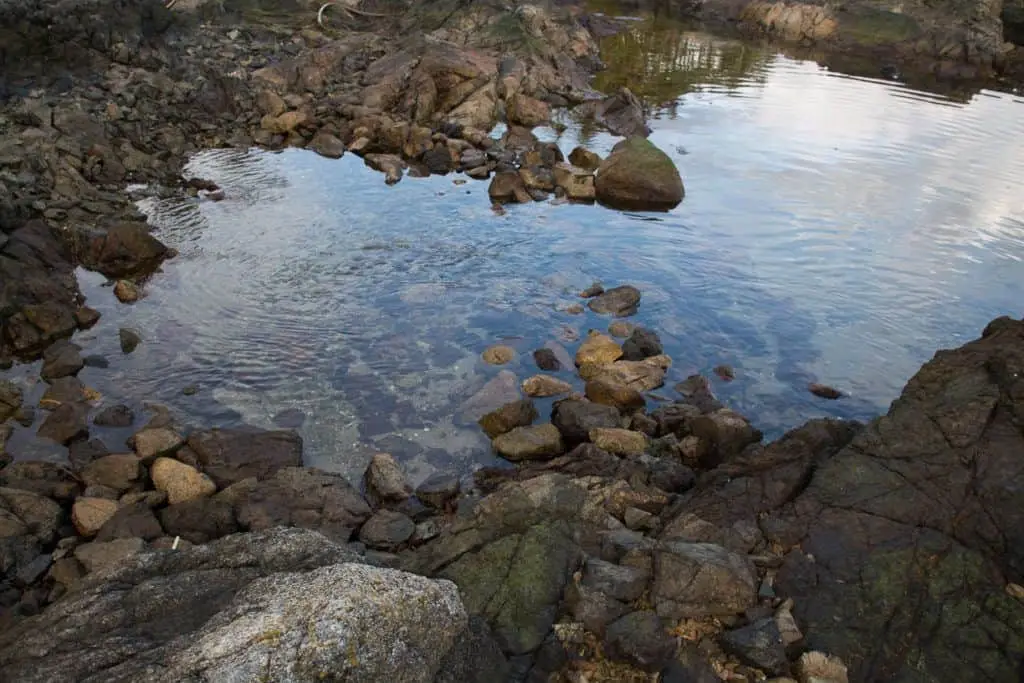
We head back to our protected anchorage for a peaceful rest aboard the Passing Cloud. In the morning we’ll transit through the myriad of islands towards Ucluelet, where our guests will board for our first departure of the 2017 sailing season and learn all about the magic and history of this region.
